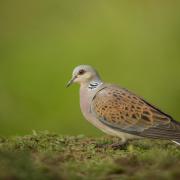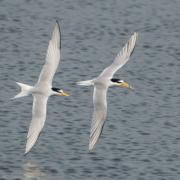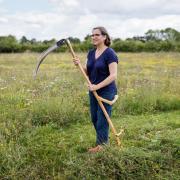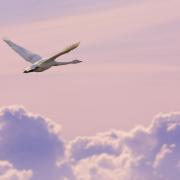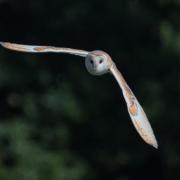Fast, agile and extremely focused, the once endangered sparrowhawk is exciting, beautiful and often misunderstood
If you're a keen watcher of life in your back garden, the chances are you've had an encounter with a sparrowhawk. It's a commonly seen raptor, a skilled hunter well adapted to urban environments, and often uses a man-made structure as an observation point to launch a hunt. They're super-fast and agile, with a high hunting drive which sometimes results in them crashing into windows or even walls. Transfixed on their prey, they can lose all awareness of their surroundings.


It's easy to spot a sparrowhawk (or Eurasian sparrowhawk) in flight. Their flight-pattern tends to be a burst of three to four wing-beats followed by a rapid glide. I just remember the term ‘flutter, flutter, glide’. Sparrowhawks are sometimes confused with peregrine falcons, but the peregrine has narrow, arced wings while the sparrowhawk has broader wings and the primary feathers look rather like fingers on a hand. They're about 11in - 15in (28cm-38cm) in length with a wingspan of 21in - 27in (55cm-70cm). You can easily tell the male and female apart. The female is much larger which allows it to take prey such as pigeons, whereas the male is more likely to take starlings and blackbirds.


Male sparrowhawks are known as ‘muskets’, derived from the French mosquet which, in turn, gave us the name of the famous gun. A very appropriate and explosive name for such a dynamic bird. The male is stunningly beautiful with very bright orange/pink markings and a vivid slate-grey back. The female is similar but the colours are less saturated. Young sparrowhawks are brown and male chicks are slightly smaller than female. You can age a sparrowhawk by its eye colour. Young birds have greenish, pale yellow eyes, while older birds develop a deep yellow colouration which will even turn red in a very old bird.
READ: 'Wildlife photography saved my life'
Photographing sparrowhawks
This isn't easy as they often appear without warning. A good place is a garden where wild birds are fed. Sparrowhawks have brilliant eyesight, so any movement will scare them off. The best opportunity is once they've caught prey when they may perch to prepare the bird to be eaten at a plucking post. These are often located close to a nest and are used to prepare the food for their chicks. Keep a respectable distance as disturbing a feeding bird can lead to it being spooked from its meal and having to use vital energy to go hunting again.

Patience is the key. Keep a camera handy in the house, and if a sparrowhawk comes to call you're doing everything right. Your garden is good for wildlife and the food chain is working in the natural way. Set your camera to a high shutter speed (these birds are fast!) to freeze movement and set the ISO accordingly to avoid photos that are too dark.
Fall and rise of the sparrowhawk
The RSPB now lists the sparrowhawk as 'amber' and they weren't always so commonly seen. Like all birds of prey, they were persecuted in the 1800s, but recovered during World War II when hunting was dramatically reduced. Sadly, numbers plummeted again in the 1950s due to the use of DDT (dichlorodiphenyltrichloroethane) as an insecticide in agriculture. It was at this time that peregrine falcon numbers famously dropped almost to extinction, while the sparrowhawk all but disappeared from the east of England. The chemicals ingested by the birds resulted in thinning of eggshells and a catastrophic reduction in breeding success. DDT was banned in Great Britain in 1986 and worldwide by 2001. Since then, sparrowhawks have slowly recovered.

I often hear people referring to sparrowhawks as ‘horrible’ or ‘cruel’ birds because they kill small songbirds. I've also heard them blamed for the decline in songbird populations. But during the ravages of DDT poisoning, the rarity of sparrowhawks was scientifically proved to have had no bearing on numbers of songbirds. Sparrowhawks prey on songbirds to feed themselves and their young. When you see one hunting it's stunning to watch, but more often than not the prey escapes unharmed as other birds raise the alarm with startled cries or by suddenly flying away. Arguably, domestic cats have a far more significant impact on wild bird populations - particularly songbirds - than all raptors, including the sparrowhawk. The RSPB quotes recent figures from the Mammal Society which estimate cats in the UK catch up to 100 million prey items over spring and summer, of which 27 million are birds.
DISCOVER MORE: Subscribe to Suffolk Magazine every month - here's how


















